The story of Elektron in 10 synths, samplers and drum machines, from SidStation to Syntakt
How Elektron went from a school project to a global music tech brand beloved by everyone from Thom Yorke to SOPHIE

Most MusicRadar readers will likely have a passing familiarity with Elektron, the Swedish brand that started as a college project in 1997 at Gothenburg's Chalmers University of Technology between three classmates, Daniel Hansson, Anders Garder and Mikael Raim.
Few companies have maintained the relevance and longevity that Elektron has, managing to not only continue growing with the times but influencing the very way in which electronic musicians utilize their gear, both on stage and in the studio.
Daniel Troberg, one of Elektron's first employees and one of the brains behind the Octatrack, described Elektron as "a school project, driven by curiosity and a true interest in forward-thinking and alternative music products. It was not about 'what the market wanted.'"
1. SidStation
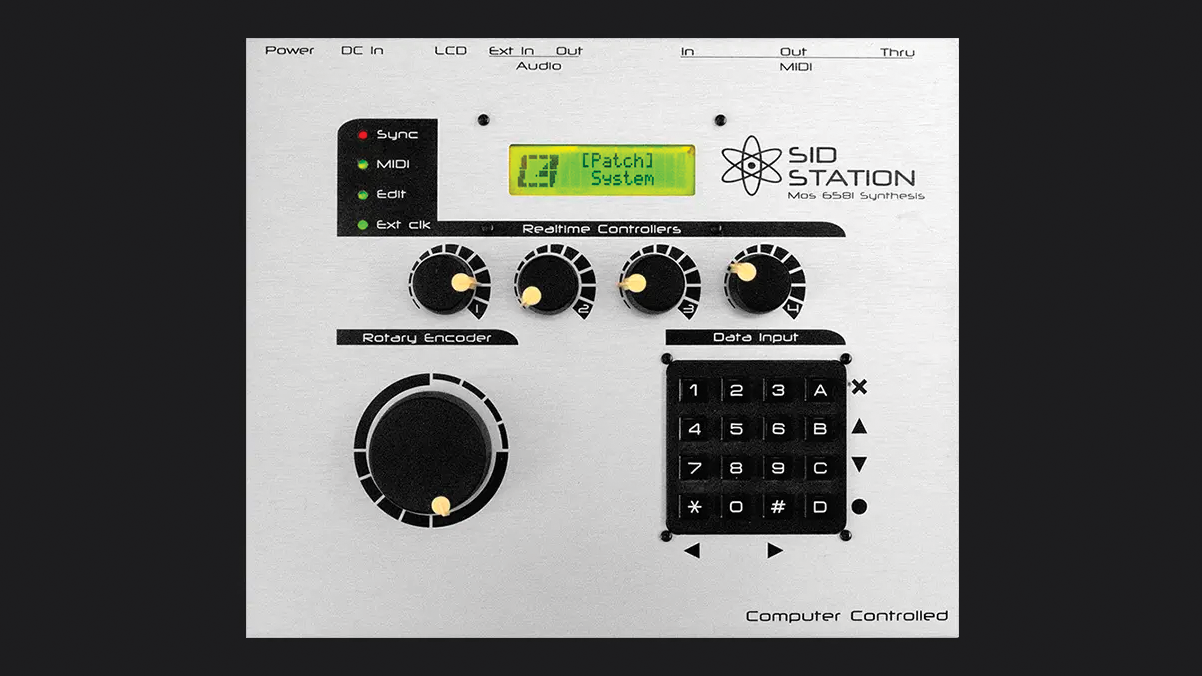
Elektron's first ever release, a synthesizer called the SidStation, stemmed from the aforementioned school project, and was initially made in a test run of ten in 1998 but not released to the public until 1999. The SidStation was unique in Elektron's lineup for several reasons.
First, it was the only synthesizer product of theirs to not be paired with their famed sequencer, which we'll return to later. It was also unique in that it utilized a MOS Technology SID chip from the Commodore 64 home computer, a machine released all the way back in 1982 that helped lead the home computing revolution.
Troberg, who came across the SidStation while working at a computer retail shop in 1998, was immediately impressed—and intrigued. “I remember it was an incredible experience to see what this quirky company had done with the sound chip from the C64, a computer I was well accustomed to, and more importantly a sound I knew very well. Let's just say I was impressed. It was the missing link between my interest in home computing and electronic music, and it felt like a match made in heaven."
"It was the missing link between my interest in home computing and electronic music, and it felt like a match made in heaven"
Because of the age of these chips, Elektron purchased them en masse and supposedly bought almost all of the remaining chips that were available. These SID chips were far more capable than previous sound chips, featuring three voices with four available waveforms, envelopes, filters and more. The SidStation quickly became a runaway success, both because of its sound - which harked back to video game soundtracks of yore - and its unique feature set.
Want all the hottest music and gear news, reviews, deals, features and more, direct to your inbox? Sign up here.
2. Machinedrum

The SidStation was such a success, in fact, that the three founders knew they had a good thing going and sought to continue. Their next instrument would build exponentially on the Elektron concept of a highly flexible and sonically idiosyncratic music-making machine.
It was called the Machinedrum, and as you'd expect from the name, it put the idea of a drum machine into a completely modern framework. The Machinedrum was where many ideas that made it into later Elektron products originated; you could think of it as the granddaddy of all future Elektron devices, in a sense.
Machinedrum featured a sequencer with the ability to extend up to 64 steps, 16 instrument tracks with the ability to load any number of 'machines' for drum-specific sonic sculpting, a kit save and reload functionality that allowed users to save a grouping of sounds and then automatically recall the saved Kit settings after a round of sonic mangling, LFOs and effect sends per track, and most impressively, Elektron's now-famed parameter locking (or p-locking, as it's come to be known), which allows users to hold down a step in the sequence, adjust any settings with the eight data knobs and save those settings for just that step.
Parameter locking introduced an unprecedented amount of movement and lifelike dance into the world of drum machines
Parameter locking introduced an unprecedented amount of movement and lifelike dance into the world of drum machines, and the world of electronic music hasn't been the same since. P-locking has featured on every Elektron sequencer since and has become somewhat of a calling card for the brand, able to turn stale, repeating loops into complex, evolving patterns. Note input values were called Trigs in Elektron speak and could be added in either real-time or in traditional step sequencing manner. Individual outputs, MIDI sequencing, a unique Slide trig feature all added to the Machinedrum's unique appeal.
It’s hard to overstate how important and influential the Machinedrum was to introducing the Elektron brand to music-makers all around the globe. The Machinedrum was also the first machine that grabbed the attention of Cenk Sayinli, better known as Dataline to Elektron devotees. Sayinli was living in Istanbul in 2002 when he encountered the Machinedrum and quickly became hooked, selling off all his gear to be able to purchase one.
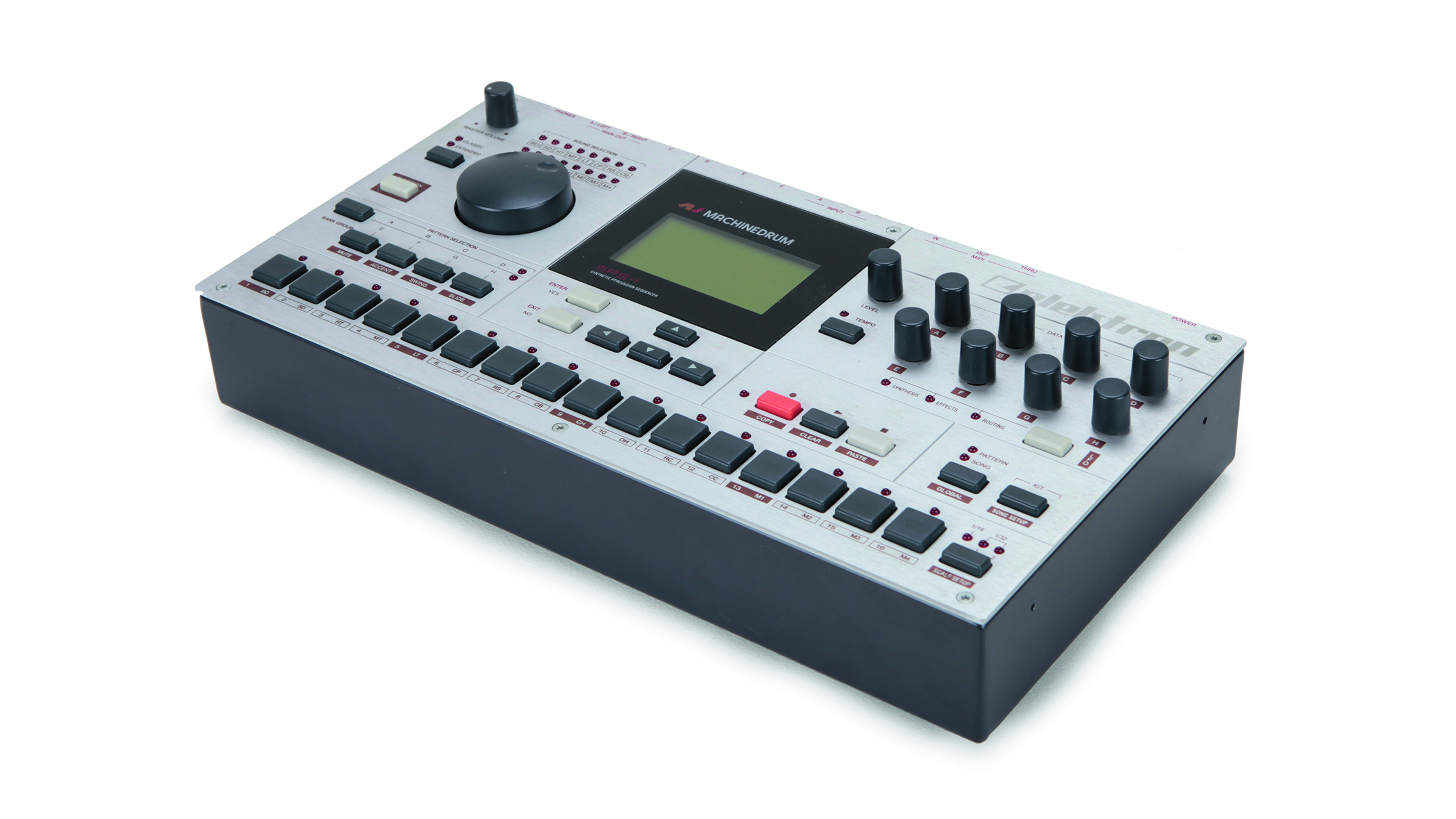
"It arrived on a cold December morning and was very special trying it out first time," Sayinli said. The brand quickly became a part of his life, as he was hired as the Product Specialist in 2010, eventually founding Elektron Studios Berlin and demoing Elektron gear at trade shows around the world. His own music as Dataline was heavily informed by Elektron products as well, something he has described as a reciprocal relationship. "I think demoing Elektron products naturally bled into my music, but also it was the other way around: making music on the Elektron boxes managed me to get hired by them," Sayinli reminisced.
The Machinedrum is still used by a huge range of producers, from The Knife to Mathew Jonson, and unsurprising given its discontinued nature, fetches huge sums on the used market. It made coveted machines like Roland's XOX series look absolutely anachronistic by comparison, and at the time of its release (and arguably, still), there was very little competition for the type of advanced, complex beats it could produce.
3. Monomachine

Frankly, Elektron's place in history would have been cemented if they had called it quits after the SidStation and the Machinedrum; each was incredibly unique and brought a wide-ranging sonic palette to the table. But this was only the beginning. The next instrument introduced to the general public in 2003 and 2004 would take the idea of a monosynth and flip it on its head: the Monomachine.
Two versions of the Monomachine were created - one that was the same size and form factor as the Machinedrum, and the SFX6, which paired the same Machinedrum-inspired chassis with an attached keyboard. Only 500 units of the SFX6 were produced, making it nearly as rare as the Sidstation.
The Monomachine took many of the concepts introduced by the Machinedrum (the flexible sequencer, the concept of kits, parameter locking, the eight rotary encoders) and paired them to six tracks of monophonic synthesis. Each of these tracks had the ability to load up one of five different synthesis methods, again following the Machinedrum's concept of 'machines'.
SuperWave (classic waveshapes), DigiPro (drum samples / wavetables), Sid (C64 emulation), FM+ (an FM engine) and VO (a voice emulator) gave users a tremendous array of sounds available, especially considering that each of these were paired with three LFOs per track and the aforementioned parameter locking that allowed for each step to have its own unique settings.
These engines were quite varied and unique and made use of the Monomachine's digital nature, allowing for deep flexibility and sonic potential, especially given the fact that they combined any way the user wished amongst the six tracks.
Along with the six instrument tracks, the Monomachine featured an FX track that could have its own set of trigs, MIDI sequencing for external gear, in addition to an audio input for processing external sound sources through its effects. Pairing the Monomachine and the Machinedrum opened up a whole world of sonic possibilities, right at your fingertips, with no laptop needed.
4. Octatrack
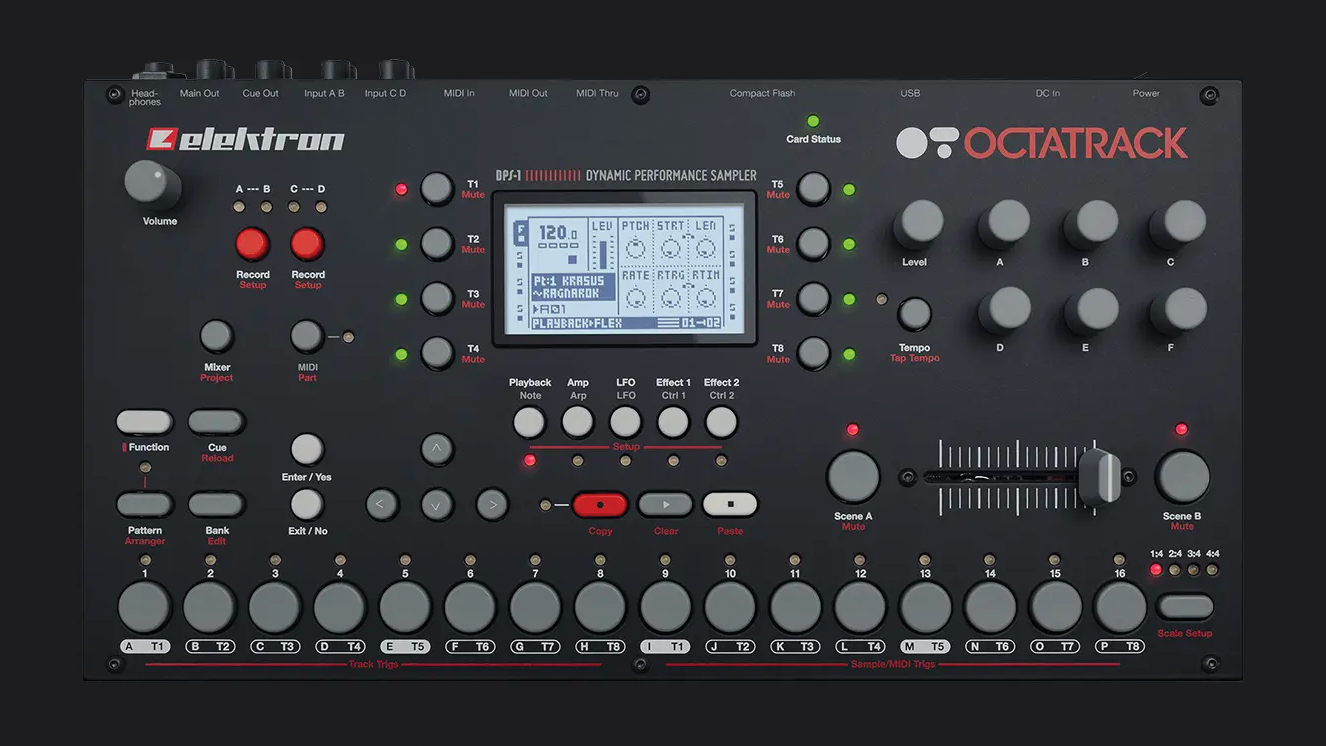
Elektron was off to an incredible start after releasing these three products, but its next design would become the most famous and well-known in its entire line-up. It's also the longest-running product in the company range, as it's still being manufactured today, albeit in a slightly updated mk2 form factor.
That product is of course the Octatrack, released in 2010, an eight voice "dynamic performance sampler '' that was arguably Elektron's most complex machine yet. Troberg described the Octatrack as an idea that came to him when he was DJing with the UW version of the Machinedrum and a few decks of vinyl. "The Octatrack was an idea that came to me when I was showing the Machinedrum UW with its real-time sampling feature together with a vinyl turntable," he said.
The Octatrack might be one of the most divisive electronic machines ever created; there have been pages and pages filled on Elektron's vast forum on both its merits and its faults
"I was doing DJ sets with one turntable and one UW and a DJ mixer, doing real-time remixing, grabbing loops and manually syncing the two, adding a fat bass drum and filtering the sampled loops and so on. When I played an MP3 from the computer, I suddenly realized how the mono sampling UW could not keep up with enormously wide phase-messy stereo MP3 files." And thus the idea of the Octatrack was born, a sampler whose very nature was as oriented to performance as it was to studio experimentation and adventurous beatmaking.
The Octatrack might be one of the most divisive electronic machines ever created; there have been pages and pages filled on Elektron's vast forum on both its merits and its faults. Many of the differing opinions on the Octatrack allude to the fact that it can do so much. Each of its eight tracks can record, playback and effect audio with a myriad of effects. Troberg describes the open-endedness of the Octatrack as a deliberate decision. "The idea was that it should be compatible with any musical style, any rhythmic mash-up, and feature a way to control several parameters easily using a fader - which made perfect sense for a DJ - and really cater for non-musicians in a way."

Just like the Monomachine and Machinedrum, the Octatrack features a sequencer that holds up to 64 steps, MIDI sequencing, kit saving (though in Octatrack speak, this functionality is known as Parts and operates slightly differently), several LFOs per track and much more. The Octatrack's highly sensitive crossfader allowed for the creation of Scenes, stored sets of parameter values across all eight tracks that could be morphed between with flicks of the crossfader, creating interpolations of these values as the crossfader moved from side to side.
This functionality alone allowed for the kind of sonic mangling that would take hours to reproduce in the context of a DAW. Samples could be stored and recalled from a Compact Flash card and the Octatrack was the first Elektron device to feature a USB port, although this was largely for data management and sample transfer. More advanced USB features would come later, however, as you'll soon see.
The Octatrack has probably graced more live set stages than many of the other Elektron machines simply for its diverse abilities
The Octatrack has probably graced more live set stages than many of the other Elektron machines simply for its diverse abilities - it can act as a sample playback machine, a sonic mangler, a way to quickly record incoming audio or even just a mixer, given that it boasts two full sets of stereo audio inputs.
While many have complained that the Octatrack imparts its own sonic imprint on audio ran through it, given the somewhat dated AD/DA converters, others have argued that it's exactly this sonic characteristic that has infused so much of the electronic music we all know and love with a unique character. Clean is boring, as many have yelled from the rooftops and into chat forum screens.
5. Analog Four
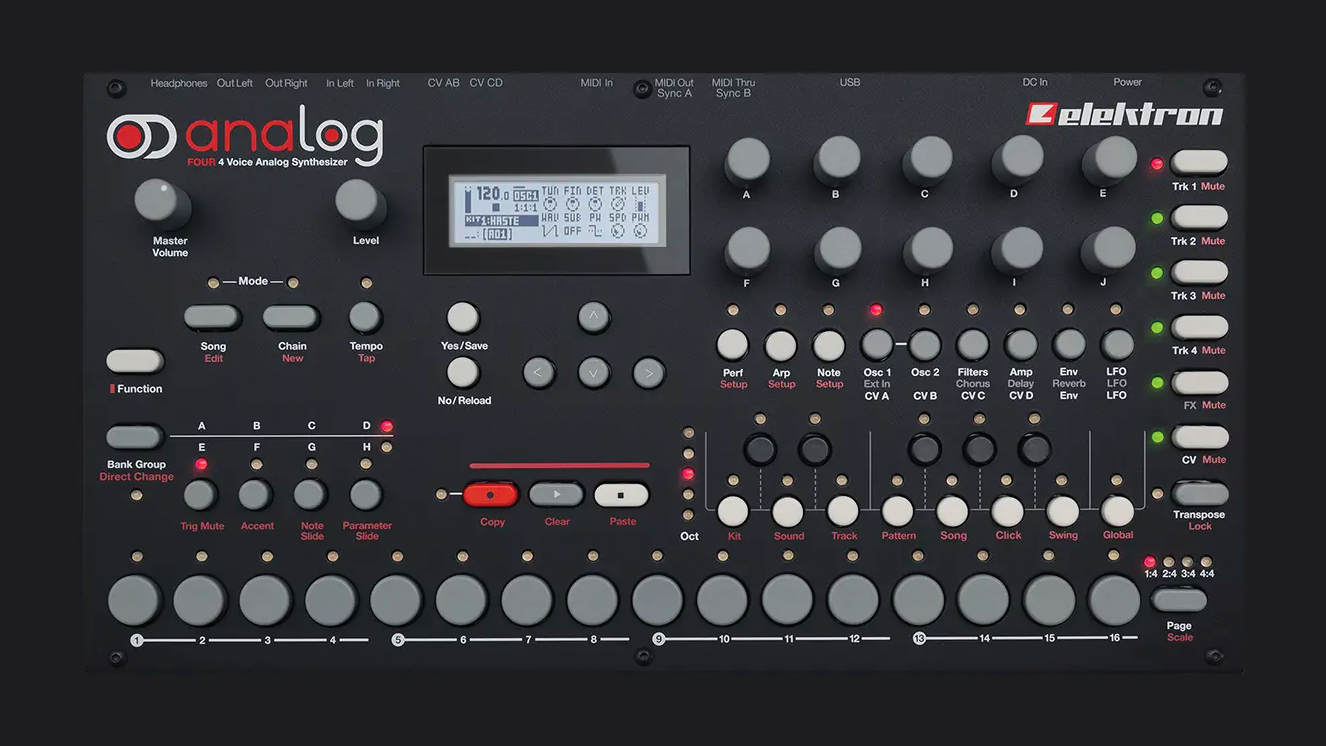
Up until 2010, Elektron had focused on purely digital devices but times were about to change. In 2012, the first of the three new 'Dark Trinity' instruments (as they've lovingly come to be nicknamed) was released. This was the all-new Analog Four, a machine Troberg described as the "ultimate analogue mono synthesizer."
He continued, saying "the Analog Four was in a way like an analog Monomachine, but this time with focus on the voicing of a TB-303 and an Oberheim synth. Like two cool mono synths that had made a love child. I provided a lot of sound examples on my Eurorack modular synthesizer, patching it in a way where it would mimic possible voicing setups on the Analog Four. Luckily we could now borrow a lot of features that the Octatrack sequencer had been blessed with, like the micro-timing and more deep trig-based events."
6. Analog Rytm
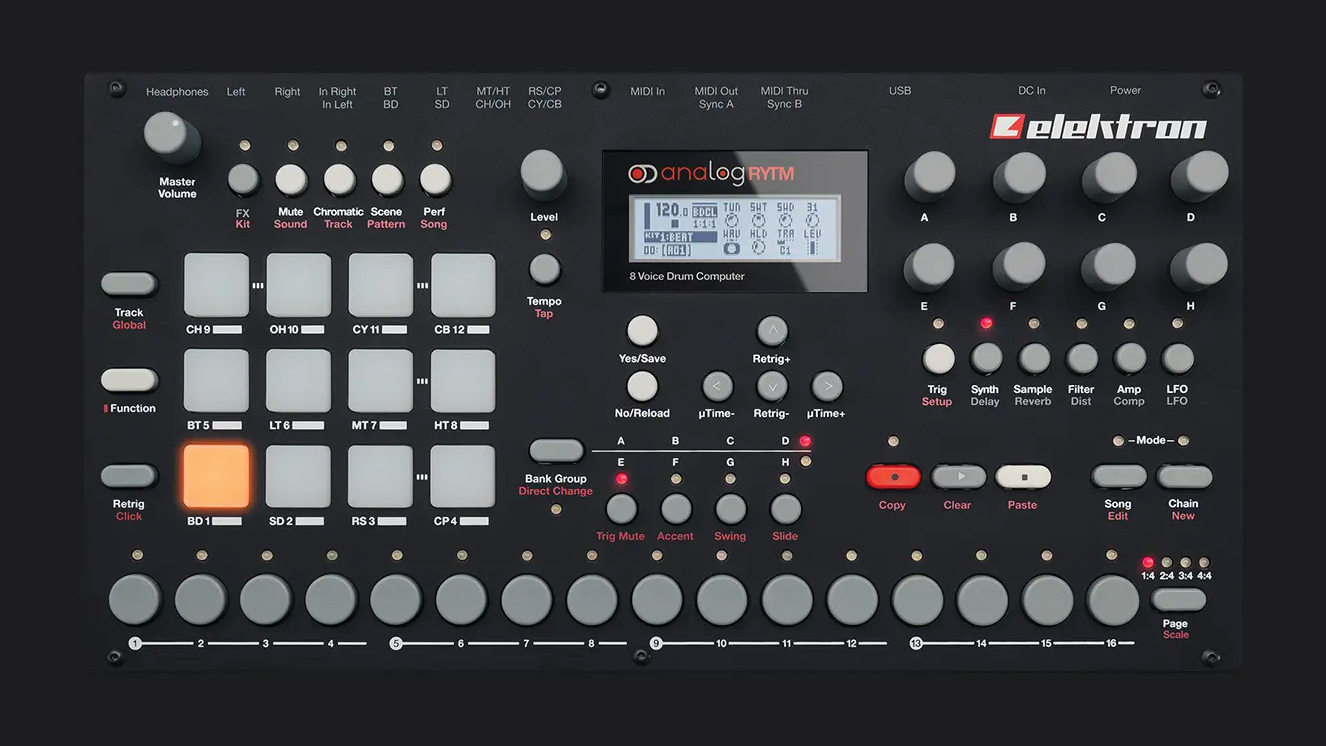
The A4, as it's come to be colloquially known, was followed shortly afterwards in 2013 by the Analog Keys and in 2014, the Analog Rytm. Each of these instruments were bold new steps for Elektron, as they each featured fully analogue signal paths paired to the same complex digital sequencers and parameter locking system that the brand had come to be known for.
The Analog Four, as you might have guessed, offered four monophonic synth tracks, whereas the Analog Rytm combined twelve instrument tracks (spread across eight voices), each with the ability to layer samples with bespoke drum-focused machines, again returning to the 'machine' concept introduced by the Machinedrum. The Analog Four's sonic engines were the most complex synths that Elektron had produced yet, with no less than eight pages of sonic sculpting per voice, each with an expanded six encoders per page.
The Analog series have become some of Elektron's most beloved devices, and the Four and Rytm are still being produced to this day in mk2 iterations. Incredibly, both are still being updated with new OS features; the Rytm's latest OS, version 1.70, was released in late 2023 and added a plethora of new features, some of which greatly expanded the functionality of what is now a ten-year-old machine (the new OS works on both mk1 and mk2 versions of the Analog Rytm, showing Elektron's dedication to their own devices and fighting the battle against forced obsolescence).
Some have criticized the Analog Rytm's pads as a weak point, and while they clearly aren't as sensitive as pads on an MPC, they work as intended. Many claim the Analog Rytm as their favorite Elektron device, as it pairs the Machinedrum's workflow with a deep and lush analogue engine that sounds like nothing else in the world of drum machines.
7. Overbridge

Another important feature of the Analog series that proved Elektron was ahead of the times was a software component called Overbridge, which allowed each of the Analog series to connect to your computer over USB and digitally stream each track's (and main stereo) ouput into your DAW. There was also a plugin window that allowed users to control the synth engines and parameters from the comfort of your computer screen.
It can't be overstated how valuable Overbridge has been to producers of all levels, as it greatly reduces the complexity of controlling and multitracking Elektron instruments via your DAW
While a similar feature had been introduced in a slightly more limited capacity by Access Virus's TI software, Overbridge was a huge step forward in connecting the analog and digital worlds, and won Elektron the coveted Red Dot award for UI Design. It can't be overstated how valuable Overbridge has been to producers of all levels, as it greatly reduces the complexity of controlling and multitracking Elektron instruments via your DAW.
One USB cable is all it takes for full data transfer of both MIDI and audio - this was huge. While it did take several years for Overbridge to reach full maturation, and there were some bumps along the way, when it finally did arrive in 2.0 form, it became something to marvel at.
8. Digitakt
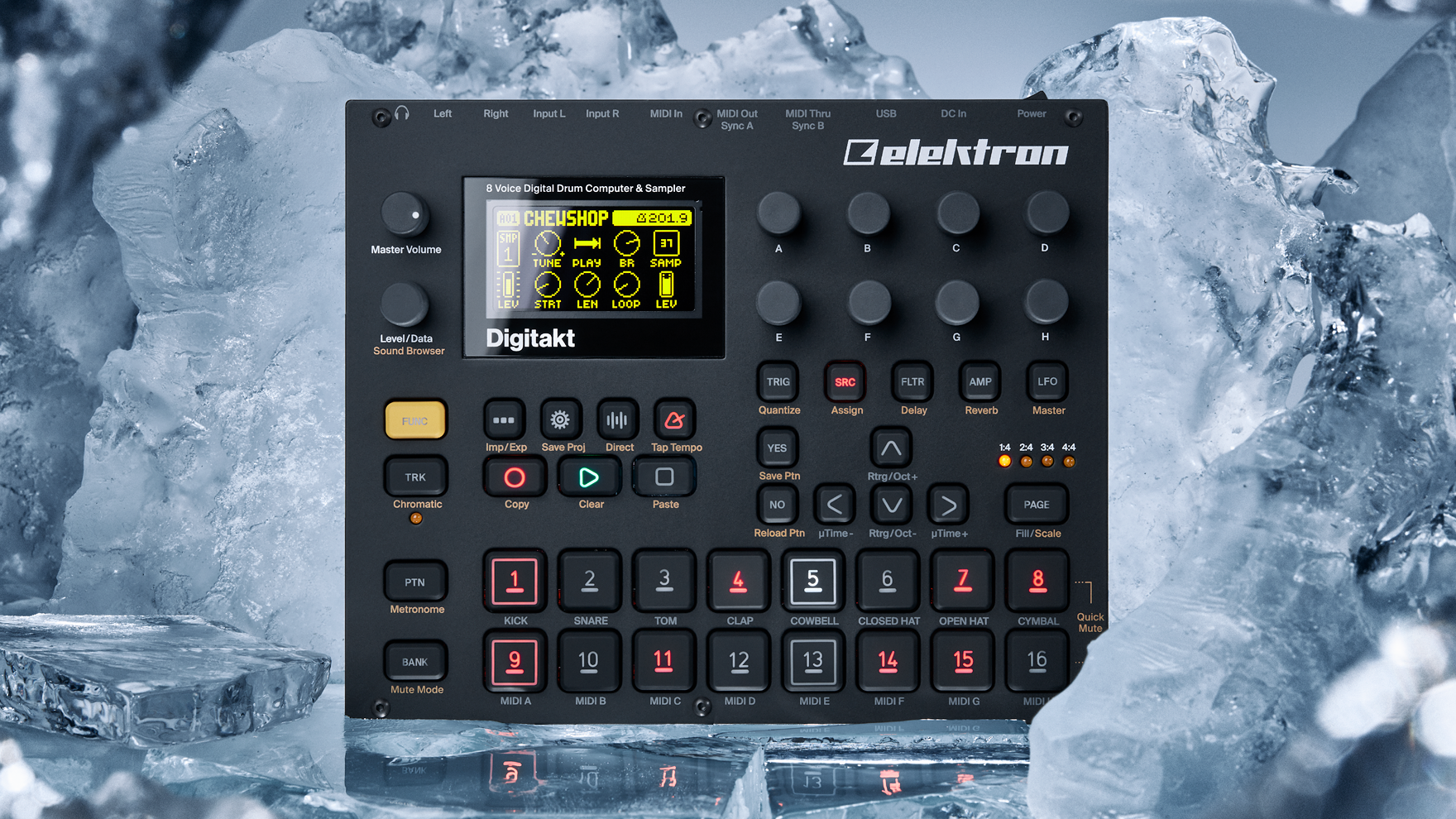
And yet, Elektron continued to evolve. The announcement of a brand new instrument, the Digitakt, first shown at NAMM 2017 brought an even wider array of musicians and performers into the Elektron fold.
The Digitakt became one of the most popular Elektron machines, possibly due to a lower price point and a streamlined workflow
The Digitakt was the first introduction of a slightly smaller instrument size with a number of features that would make their way into other machines in the range in subsequent years. Pairing an eight track sampler and 'drum computer' with a further eight MIDI tracks, each of which are four-note polyphonic, made the 'takt an incredibly portable centerpiece for a live rig, or just a studio workhorse capable of mangling samples any number of ways.
The Digitakt also did away with the Machines concept, as each of its eight audio tracks are identical, allowing users to place whatever samples they choose on each. It was also the first purely digital machine since the Octatrack, eschewing the analogue sound generation of the Analog Four and Analog Rytm. And yet the Digitakt became one of the most popular Elektron machines, possibly due to a lower price point and a streamlined workflow compared to its earlier products.
9. Digitone
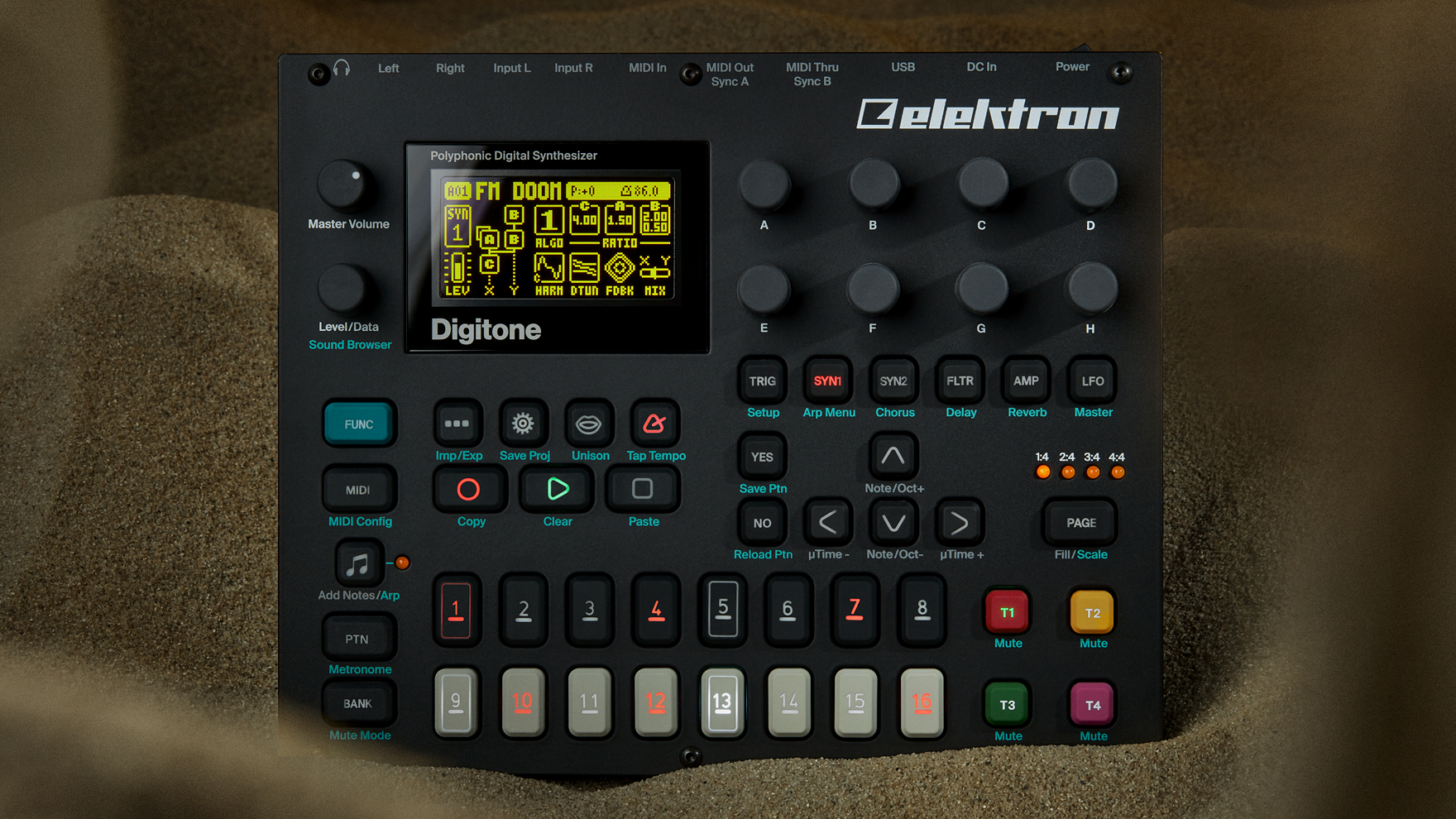
Following the Digitakt came Elektron's first foray into a machine devoted purely to FM synthesis, the Digitone. An eight voice polyphonic synthesizer that had four synthesizer tracks and four MIDI sequencing tracks, the Digitone came in the same compact form factor as the Digitakt and introduced many newcomers to the complexity of FM in an easy to understand package.
Ess Mattisson, one of the Digitone designers, described it as "the right synth at the right time." He went on, describing the milieu into which it entered. "Everyone was ready for fiercely digital synths to come back and It was a dream of mine to make an FM synth in the Elektron format, things just fell into place," he continued.
"Every single FM synth ever made has the tagline of being 'FM made simple', but I feel like we really did that with the Digitone - it’s one of the few FM synths that stray away from the paradigm established by Yamaha and instead explores a unique and smaller, yet capable, subset of FM synthesis."
10. Syntakt

The success of both the Digitakt and Digitone (both of which are Overbridge-compatible) showed Elektron that the compact form factor was a hit with their user base and in 2022, the newest Elektron machine made its debut.
Syntakt combined many features from previous products, placing them all in a single package - analogue engines from the Analog Rytm, digital engines from the Model:Cycles (a smaller, less expensive machine itself derived from the FM engine in the Digitone) and an FX track that many likened to a mini Analog Heat, itself yet another novel product that Elektron introduced in 2016.
Many Elektron devotees saw Syntakt as a best-of device; others saw it as skimming the surface of what made the other machines great
Syntakt also upped the track count to 12, with all tracks able to send MIDI information or sequence the internal engine. Many Elektron devotees saw Syntakt as a best-of device; others saw it as skimming the surface of what made the other machines great, while not bringing enough novelty and innovation to the table.
How the Syntakt will fare in the long-term remains to be seen, but it's without question that Elektron has proven itself to be the rare brand whose customers remember the people involved just as much as the products they produced, and that sentiment is shared by those involved.
"Elektron had a brand identity and charisma which was displayed so well during Machinedrum and Monomachine times - I think this is what makes Elektron special to me," Sayinli said. "Some could say it's the parameter locks, or the sound, or its clicky buttons or pixel screen fonts... and there are probably better answers than mine. For myself, it's more of a nostalgic feeling."
The evolution of the company as it has grown and expanded into a globally recognized brand hasn't come without growing pains, as is inevitable for any company that starts as an idea and becomes hugely successful on an international stage.
Troberg describes the early days as a special time: "There was lots more collaboration, and that speaks volume to what was achieved. From the collaboration with people like Jesper Kouthoofd (who later founded Teenage Engineering) to Sony Japan who wanted to make a semi-modular music system, to connecting with rare chip scavengers and so on. It was so much more fun and explorative, and also not completely destroyed by the ultra-connected internet world we live in now."
For those who enjoy the act of real-time expression with a highly responsive instrument, the Elektron interface has been designed to deliver on that experience
Devon Hughes, who worked as a sales manager for Elektron between 2014 and 2019, described the brand's gear as balancing complexity and simplicity perfectly. "Elektron gear is special because extra attention was paid to the important role of immediacy in the composition and performance process. Different kinds of people like to create music in different ways, and for those who enjoy the act of real-time expression with a highly responsive instrument, the Elektron interface has been designed to deliver on that experience."
Where Elektron will go next is anyone's guess, but there is a legion of fans, musicians, programmers and producers waiting with baited breath for the next machine to bear the Elektron logo. It's quite an incredible story for any brand, but especially one with such a meager start - an idea formed by a trio of Swedish college students that has now grown into a new mode of electronic expression. You could say the future for Elektron is brighter than it's ever been.







